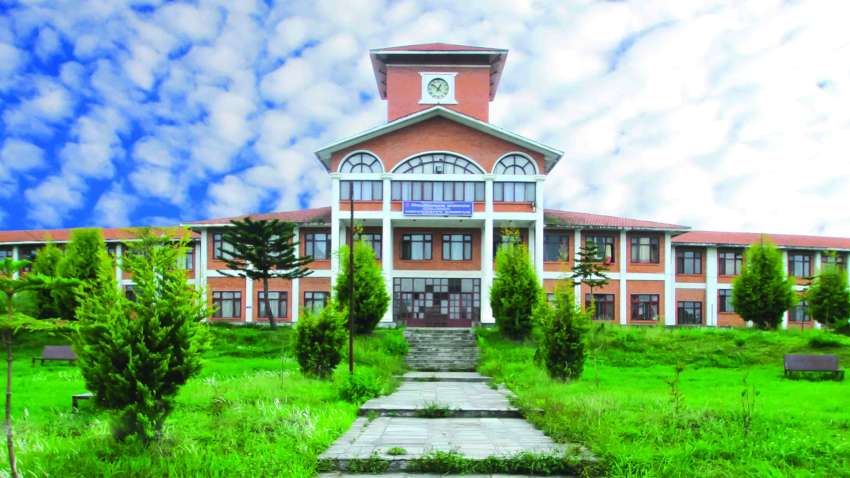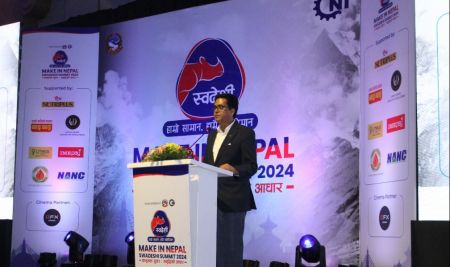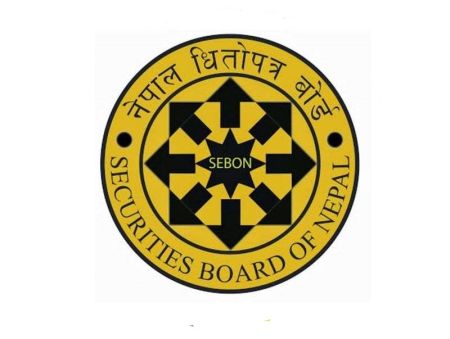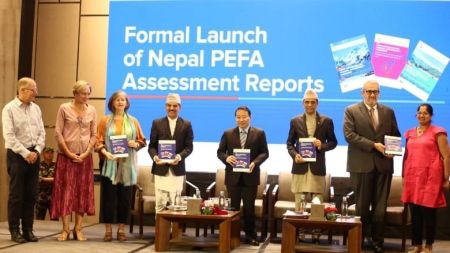BY Asish Thakur
Two words that I keep hearing everywhere, in every situation is "New Nepal." According to definition, the word "new" refers to something that has just been created, invented, or introduced. Therefore, it is clear that our goal as a group is to create a new Nepal or to provide the country a fresh perspective. It is crucial for us to labour, plan, and strategise in order to take new initiatives, establish novel techniques, and relearn whatever needs to be discarded from the past. It is crucial to adopt fresh ideas from around the world and learn from best practices. Most importantly, we must be open to adopting effective ideas from others and be honest about the areas in which we have fallen short.
Understanding Brain Drain
Brain drain, or the exodus of qualified people in search of better prospects elsewhere, continues to be an insurmountable problem for Nepal. Examining the root causes of this phenomenon is necessary to determine its entire scope. The lack of acceptable work possibilities within the nation is a major contributor to brain drain. Because of the growing educated population, there is a severe mismatch between the skills required for open positions and those of job seekers in Nepal's labour market.
The International Labour Organization (ILO) has conducted research to better understand the challenges that Nepal's labour market has faced in integrating its rapidly growing workforce. The World Bank also notes that the main obstacles to job creation in Nepal are a lack of access to financing and an environment that is unfriendly to entrepreneurs. Since the pay and opportunities are better elsewhere, talented people are forced to look for more enticing options. The brain drain is not only occurring at the level of the labour market; it is also occurring at the level of students, who are leaving the country in quest of higher education.
Quality Education
Let's look at some notable trends. Since finding qualified human resources has become a global concern, it is now usual practice to often post job openings in an effort to find the ideal match for employment responsibilities. Similarly, enrollment in nationally affiliated institutions across Nepal has significantly decreased, as has admission to national government universities. Likewise, enrollment in colleges connected to international universities has displayed exceptional stability. There has also been a noticeable increase in the number of people applying for No Objection Certificates (NOC) and pursuing education abroad.
The flight of knowledgeable people from Nepal also serves as a reminder of the shortcomings of the country's education system. The declining enrollment in universities and colleges in Nepal underscores a significant lack of confidence among students and parents in the efficacy of the local educational system. A thorough revamp is required to address these issues, leading to increased effectiveness, relevance, and global competitiveness.
Fostering a culture that values innovation, critical thinking, and creativity is one of the key components of effective education. The Education for Sustainable Development Project of UNESCO promotes a comprehensive strategy that takes into account social, environmental, and economic issues. By incorporating these ideas into the curriculum, Nepal can enable its pupils to develop into adaptable, problem-solving people.
Learning from Finland
The educational system in Finland is one of the best in the world. The nation's emphasis on experiential education, play-based learning, and teacher autonomy has yielded impressive outcomes. Teachers in Finland receive thorough training that places a strong emphasis on pedagogical abilities, and they are trusted to create curricula that are tailored to the requirements of the pupils. Nepal can learn from Finland's strategy and fortify its educational system, and encourage motivated and engaged students.
Additionally, vocational and technical education holds great promise for giving students practical skills that are in line with the demands of the labour market. Vocational education has been successfully incorporated into national systems in nations like Germany, producing a highly qualified workforce that meets market demands. Nepal can use a comparable strategy to reduce unemployment and keep its talent pool. While we have a good resource and pool of training institutions in Nepal, political and administrative interests are hampering their reputation and acceptance among employers as well as the students themselves, rather than improving their calibre, capacities to train more and quality individuals. The nation has been erecting many entry obstacles for both technical education providers and students, when we should have been stepping up our efforts to develop and expand vocational education.
The dual education system in Switzerland can also be a good example for Nepal. In addition to receiving a theoretical education, students also receive practical training at affiliated businesses. This strategy not only fills skill gaps but also ensures that graduates are prepared for the workforce. Nepal can develop a competent workforce that matches the needs of the job market by forging relationships with businesses and integrating vocational training into its educational program.
It is frequently argued that providing vocational education to Nepalis is an attempt to turn them into labourers. However, if we take a closer look, we can see that vocational education helps to make good progress in two areas - fostering the understanding that every job is significant and valuable in the market, and providing an immediate career path for people to overcome unemployment.
Regarding the liking of students, it has become fairly clear as a result of the recent work we completed for the development of curriculum and provision of skill-based training for Class 9 students of all government schools in Kathmandu Metropolitan City. During the training, students learned the skills in schools as part of ‘Skill in Education’ - and most importantly, the students learned it enthusiastically.
Collaboration on a Global Scale
Despite the difficulties caused by brain drain, Nepal is well-positioned to strengthen its educational system through foreign partnerships. Nepal may gain access to priceless materials, information, and best practices that are suited to regional circumstances by developing connections with recognised universities and educational institutions worldwide.
Students will be given the opportunity to accept different viewpoints, expand their views, and develop global competences through the implementation of cooperative exchange programs between Nepali and foreign universities. The New Colombo Plan of the Australian Government, which encourages Australian students to study and complete internships in the Indo-Pacific area, including Nepal, serves as a convincing example. For Nepali students, a reciprocal program might have a significant positive impact on their academic careers.
While the government isn't doing it, the private sector is making some efforts in this direction. The government could at least support them to develop on this. Nepal should aim to bring in universities and institutions that are successful abroad to Nepal. Nepal can advocate for the expansion of relationships between private colleges and internationally renowned universities in order to foster international cooperation. It can also create strategic alliances with academic institutions from nations recognised for their competence in particular sectors, promoting information sharing and research partnerships.
Both the public and business sectors must actively participate in Nepal's ‘New Nepal’ goal. Cooperation between public and private parties is essential to close the gaps in the educational system. Public-private collaborations have the potential to yield large rewards, including improved infrastructure, cutting-edge instructional techniques, and more access to technology.
The ICT in Education programs in Nepal are an excellent example of the possibilities of public-private cooperation. The government will increase access to high-quality education, especially in rural areas, by working with private sector businesses and NGOs to deploy digital learning tools and resources in schools. Nepal can enhance the use of technology in education by working with comparable organisations, encouraging creative and engaging learning processes.
Teacher Training Creates The Foundation
Any effective educational system is built on a teaching staff that is qualified and driven. In order to improve the standard of education in Nepal, it is crucial to provide teachers with ongoing professional development and training opportunities.
A strong emphasis on teacher preparation is credited with much of the achievement of the much praised Finnish educational system. The educators in Finland possess extensive training and are highly competent to give entertaining lessons. Nepal can create a strong educational ecosystem that fosters its students' full potential by investing in teacher development. While there are sometimes heated discussions about eliminating or restricting the role of the private sector in education when ultra-nationalism is present, let's examine the opposing viewpoint realistically. The private sector's involvement in Nepal's educational system has the power to significantly improve the status of the nation's human capital. Public-private partnerships have the potential to create a symbiotic connection that has a number of good effects on the state of education as a whole.
Investment in IT: Bringing in financial resources to improve educational infrastructure and technology is one of the private sector's many benefits. Private institutions frequently have the resources to make investments in cutting-edge infrastructure, well-stocked labs, libraries, and classrooms. This improves the learning environment and supports extracurricular and academic endeavours of students, promoting the growth of a qualified and well-rounded workforce.
Innovation in Curriculum and Pedagogy: The private sector is renowned for its capacity for innovation and swift response to shifting market conditions. If involved, private institutions will frequently implement innovative teaching approaches and curriculum that are in line with worldwide trends and industry demands. Private educational institutions can better prepare students for the challenges of the labour market and increase their attractiveness to companies looking for a qualified and vibrant workforce by integrating practical skills and real-world applications into the curriculum.
Industry-Related Training and Internships: Involving the private sector can result in closer ties with businesses, which can result in joint initiatives to close the gap between education and the job market. Private universities can create curricula that provide training and internships that are applicable to industry, allowing students to get useful work experience and hone practical skills that are in line with market demands. Such programs improve employability of graduates, which lowers the rate of brain drain as more qualified people find suitable employment opportunities domestically.
Tailored Vocational and Technical Education: Private sector organisations are well-positioned to provide tailored vocational and technical education which is essential for developing a competent workforce. Private colleges can create vocational programs that give students the skills they need to succeed in the labour market by analysing specific skill gaps and demands in various industries. This specialised strategy not only solves the skilled labour shortage, but also creates new opportunities for self-employment and entrepreneurship.
Scholarships and Financial Help: When the private sector is involved, merit-based scholarships and financial help can often be made available to qualified students. Talented people from various backgrounds are now able to obtain high-quality education that would have otherwise been too expensive. Private institutions provide a more inclusive and varied skilled workforce that reflects the actual potential of Nepal's human capital by enabling equal access to education.
Enhanced Research and Development: Partnerships between the public and private sectors can promote efforts for research and development in the educational system. Private institutions are more adaptable and receptive to new trends, which can result in cutting-edge research initiatives, technical developments, and creative solutions. Critical thinking and problem-solving abilities of students are developed through this research-based method, which better prepares them to handle problems in the real world.
Professional Development for Teachers: Professional development for teaching staff is frequently given top priority in private educational institutions. Private education institutions can make sure that their teachers stay up to speed with the most recent teaching strategies and approaches by investing in ongoing training and mentorship programs. This results in better learning outcomes and a higher standard of instruction, developing a student population that is more skilled and competent.
A trained human resource pool can grow greatly with the involvement of the private sector in Nepal's educational system. Resources, creativity, industry partnership, and specially designed vocational programs can give students the skills they need to succeed in the contemporary work market. Private sector involvement offers an efficient way to combat brain drain, retain talent, and promote the development of a prosperous and skilled Nepal by coordinating education with industrial demands.
The success of the ‘New Nepal’ depends on coordinated efforts to reform the country's educational system. Nepal can successfully develop a highly skilled and dynamic workforce, capable of leading the country toward a prosperous future, by addressing brain drain, enhancing educational quality, fostering international collaborations, promoting public-private partnerships, and placing a high priority on teacher development.
Nepal has a rich cultural history and a lot of undiscovered talent waiting to be developed. Nepal may in fact achieve its goal of being a successful nation with a population that is highly trained and educated by putting creative ideas, strategic adjustments, and lessons learned from international models into practice.
(Thakur is the Chairman & Executive Director of Glocal Pvt Ltd. He can be reached for comments at [email protected])






















